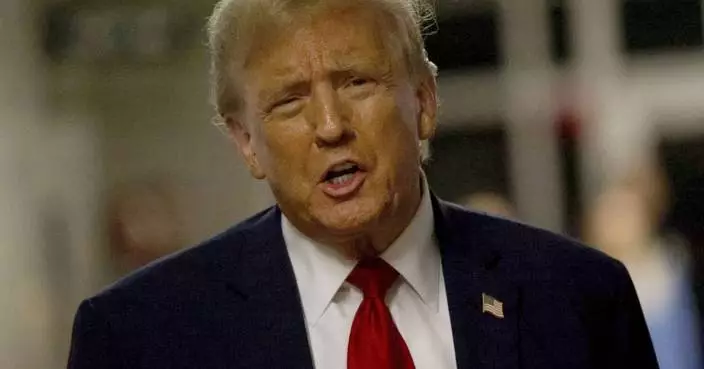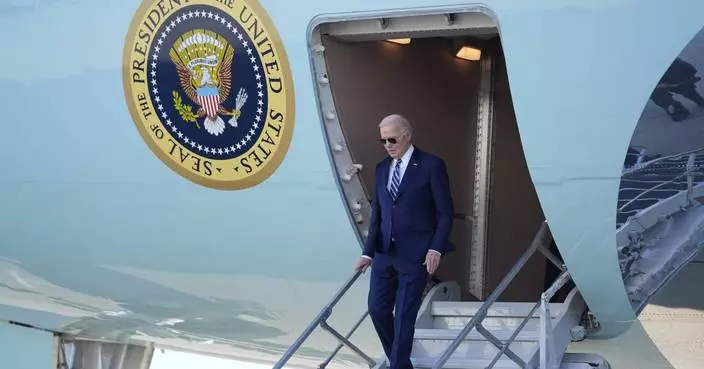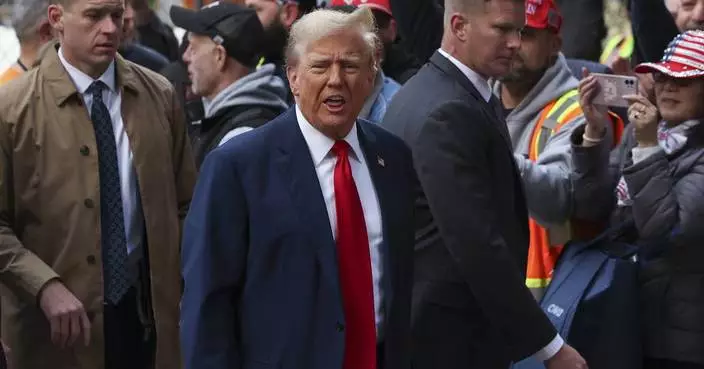The sequel to President Donald Trump's first year in office is opening with the lead player hamstrung by a government shutdown and hunkering down amid investigations, crises and political unease.
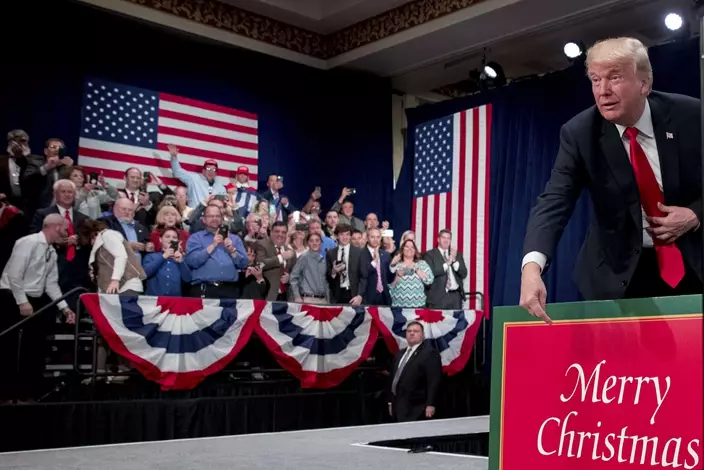
President Donald Trump points at a sign that reads "Merry Christmas" as he arrives at a tax reform rally at the St. Charles Convention Center, Wednesday, Nov. 29, 2017, in St. Charles, Mo. (AP Photo/Andrew Harnik, File)
After 365 days in the Oval Office, Trump has found that his drive to deliver quickly on campaign promises has yielded to the sobering reality of governing — and the prospect of an electoral rebuke in November. Administration aides, outside allies and Republicans on Capitol Hill see the Trump White House continuing to face many of the same challenges it wrestled with last year, with fresh plot twists to boot.
Special counsel Robert Mueller's probe into Russian interference in the 2016 election keeps moving ever closer to the Oval Office. The government shutdown highlights the legislative challenges that persist even with Republicans controlling the White House and both the House and Senate, and makes clear the administration's need to more carefully target its political capital on specific agenda items. And the fall elections are shaping up as a referendum on Trump's tenure.
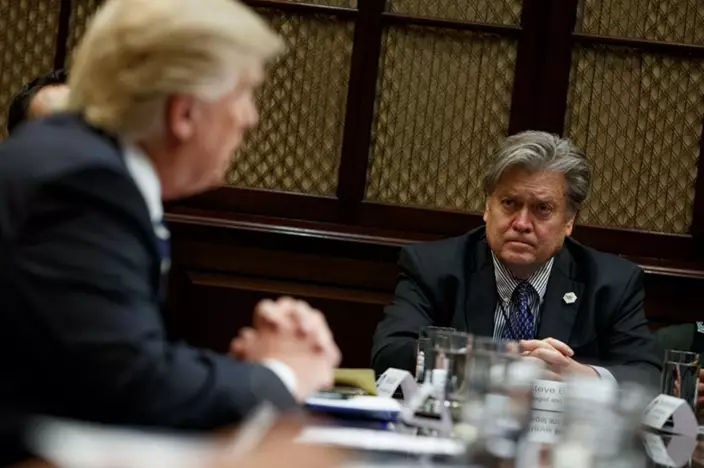
Then-White House Chief Strategist Steve Bannon listens as President Donald Trump speaks during a meeting on cyber security in the Roosevelt Room of the White House in Washington, Tuesday, Jan. 31, 2017. (AP Photo/Evan Vucci, File)
"In the second year, you no longer are one-dimensional," said Ari Fleischer, press secretary when George W. Bush was president. "There's an inevitable pivot that every administration makes, and that is to recognize that it's no longer about future events and promises, it's now about defending and promoting last year's accomplishments."
No administration comes into office fully ready for the task of leading the government, and Trump's team has taken disruption to a new extreme. Republicans outside the White House are now hoping the Trump administration will be more politically savvy. But the 71-year old president has proved set in his ways, trusting his instincts over the advice of his aides, and there is no reason to expect that won't continue.
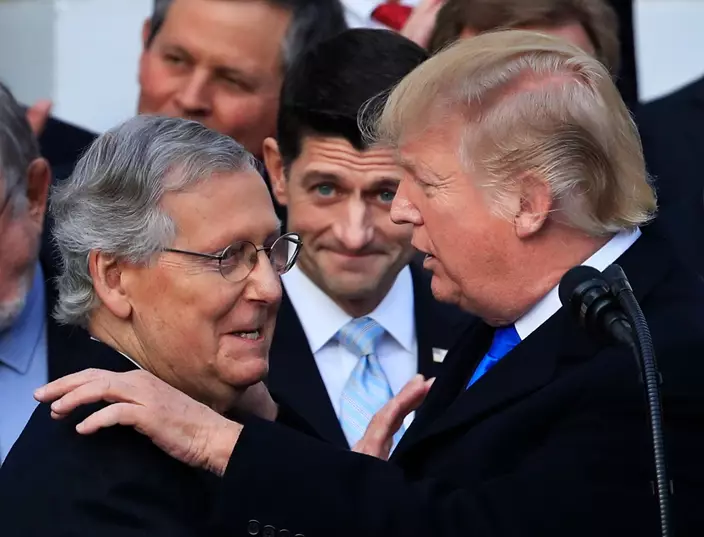
President Donald Trump congratulates Senate Majority Leader Mitch McConnell of Ky., while House Speaker Paul Ryan of Wis., watches to acknowledge the final passage of tax overhaul legislation by Congress at the White House in Washington, Wednesday, Dec. 20, 2017. (AP Photo/Manuel Balce Ceneta, File)
Yet Trump has been changed by the experiences of the past year, according to aides and outside advisers, most of whom spoke on condition of anonymity because they were not authorized to publicly discuss internal dynamics. The president has grown more fearful of leaks. His inner circle of friends is smaller, most recently with the banishment of former chief strategist Steve Bannon. This smaller group of informal advisers has seen Trump favor those who tell him what he likes to hear, according to several people who talk to him regularly. And that, combined with chief of staff John Kelly's determination not to manage the president, is furthering the Trump's impulsive streak.
What comes next?
Personnel changes are afoot to streamline the West Wing political and legislative affairs teams in preparation for the November elections, and Trump and Vice President Mike Pence are preparing aggressive campaign and fundraising schedules.
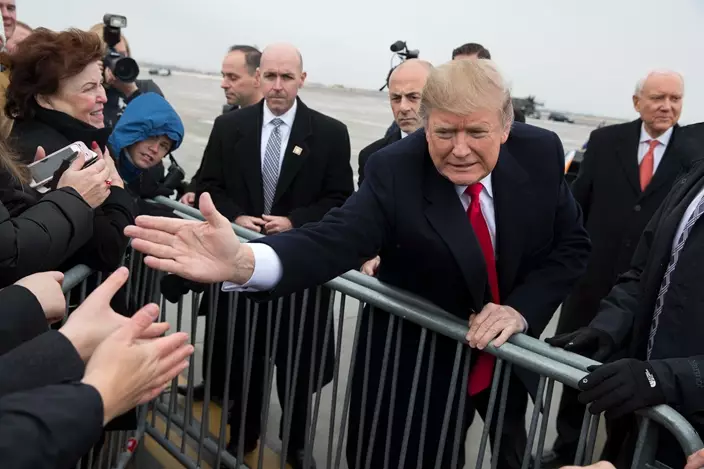
President Donald Trump shakes hands with supporters after arriving at Salt Lake City International Airport, Monday, Dec. 4, 2017, in Salt Lake City. (AP Photo/Evan Vucci, File)
Despite a booming economy, Trump's approval rating is at historic lows for a first-year president, weighed down by partisan controversy and his own divisive actions and statements. The fall contests represent a make-or-break moment for Trump and could influence his pursuit of a second term, an effort that will begin in earnest next year.
GOP lawmakers frame the importance of keeping control of the House and Senate in self-serving terms for Trump: Democratic control would grant subpoena power to the president's fiercest critics.
Wary of potentially losing the Senate, the White House plans to continue its aggressive push to appoint conservative judges before Congress breaks for campaign season.
For all the legislative ambition of the first year, Trump's second stands to be a more muted affair.
Immigration, the sticking point in the current shutdown, stands as the most promising option after the president provoked a crisis by setting up the March 5 expiration of protections for roughly 700,000 young immigrants brought illegally to the U.S. as children. He's hoping to use it as leverage to pass his hard-line immigration priorities.
Before the State of the Union address Jan. 30, the White House has been preparing much-delayed policy proposals on infrastructure and welfare, but little progress is anticipated as lawmakers have begun turning their focus to their own re-elections.
White House officials said Trump is looking forward to spending much of the year promoting his achievements on judicial nominations, deregulation and passage of the tax overhaul.
"If year one is about tallying campaign promises," said White House spokesman Hogan Gidley, "in year two, we can talk about results."
Administration officials pointed to Trump's speech Thursday in Pennsylvania, where he highlighted the benefits of his tax plan, as an example of his efforts to sell his first year to the public.
Overseas, many of the same challenges remain. The nuclear threat from North Korea occupies an ever-growing focus inside the West Wing. And while the Islamic State group's foothold in Iraq and Syria has been diminished, Trump is facing new questions about the role of U.S. troops in the region.
WASHINGTON (AP) —
The U.S. will provide Ukraine additional Patriot missiles for its air defense systems as part of a massive $6 billion additional aid package, Defense Secretary Lloyd Austin announced Friday.
The missiles will be used to replenish previously supplied Patriot systems. The package also includes more munitions for the National Advanced Surface-to-Air Missile Systems, or NASAMS, and additional gear to integrate Western air defense launchers, missiles and radars into Ukraine's existing weaponry, much of which still dates back to the Soviet era.
Ukrainian President Volodymyr Zelenskyy discussed the need for Patriots early Friday with the Ukraine Defense Contact Group, a coalition of about 50 countries gathering virtually in a Pentagon-led meeting. The meeting fell on the second anniversary of the group, which Austin said has “moved heaven and earth” since April 2022 to source millions of rounds of ammunition, rocket systems, armored vehicles and even jets to help Ukraine rebuff Russia's invasion.
Zelenskyy said at least seven Patriot systems are needed to protect Ukrainian cities. “We urgently need Patriot systems and missiles for them,” Zelenskyy said. “This is what can and should save lives right now.”
At a Pentagon press conference following the meeting, Austin said the U.S. was working with allies to resource additional Patriot systems but did not commit to sending more U.S. versions. He said he has been speaking one-on-one with a number of his European counterparts in recent days to hash out this issue and others.
“It's not just Patriots that they need, they need other types of systems and interceptors as well,” Austin said. “I would caution us all in terms of making Patriot the silver bullet.”
Austin said he is asking allied nations to “accept a little bit more risk” as they consider what weapons to send to Ukraine. A number of nations have expressed some reluctance to send Patriot air defense systems to Ukraine because most don’t have very many and they belieive they need them for their own defense.
U.S. officials said the aid package will be funded through the Ukraine Security Assistance Initiative, which pays for longer-term contracts with the defense industry and means that it could take many months or years for the weapons to arrive. The officials spoke on the condition of anonymity to discuss details not yet made public.
The new funding — the largest tranche of USAI aid sent to date — also includes High Mobility Artillery Rocket System, or HIMARS, as well as Switchblade and Puma drones, counter drone systems and artillery.
The Ukraine Defense Contact Group has been meeting about monthly for the past two years and is the primary forum for weapons contributions to Kyiv for the war.
Friday's meeting follows the White House decision earlier this week to approve the delivery of $1 billion in weapons and equipment to Ukraine. Those weapons include a variety of ammunition, such as air defense munitions and large amounts of artillery rounds that are much in demand by Ukrainian forces, as well as armored vehicles and other weapons.
That aid, however, will get to Ukraine quickly because it is being pulled off Pentagon shelves, including in warehouses in Europe.
Gen. CQ Brown, chairman of the Joint Chiefs of Staff, said the $1 billion weapons package will have a key benefit.
“There's some near-term effects,” said Brown, who stood alongside Austin at the Pentagon briefing. “Now the Ukrainians don't necessarily have to ration what they have because they know things are coming out of this package and there will be follow-on packages.”
The large back-to-back aid approvals are the result of a new infusion of about $61 billion in funding for Ukraine that was passed by Congress and signed into law by President Joe Biden on Wednesday. And they provide weapons Kyiv desperately needs to stall gains being made by Russian forces in the war.
Bitterly divided members of Congress deadlocked over the funding for months, forcing House Speaker Mike Johnson, a Louisiana Republican, to cobble together a bipartisan coalition to pass the bill. The $95 billion foreign aid package, which also included billions of dollars for Israel and Taiwan, passed the House on Saturday, and the Senate approved it Tuesday.
Senior U.S. officials have described dire battlefield conditions in Ukraine, as troops run low on munitions and Russian forces make gains.
Since Russia’s February 2022 invasion, the U.S. has sent more than $44 billion worth of weapons, maintenance, training and spare parts to Ukraine.
Among the weapons provided to Ukraine were Abrams M1A1 battle tanks. But Ukraine has now sidelined them in part because Russian drone warfare has made it too difficult for them to operate without detection or coming under attack, two U.S. military officials told The Associated Press.
Follow the AP's coverage of Russia's war in Ukraine at https://apnews.com/hub/russia-ukraine.
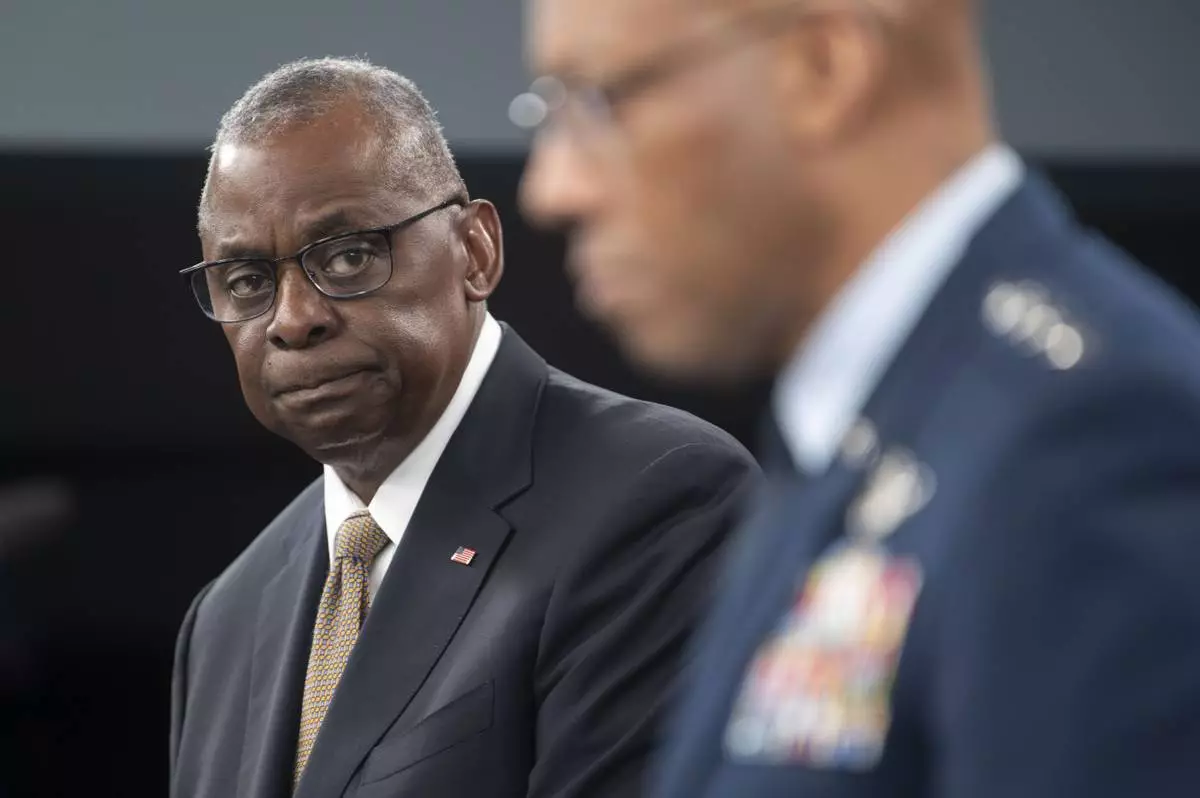
Defense Secretary Lloyd Austin, left, looks towards Chairman of the Joint Chiefs of Staff Gen. Charles Q. Brown Jr. during a press briefing on Friday, April 26, 2024 at the Pentagon in Washington. (AP Photo/Kevin Wolf)
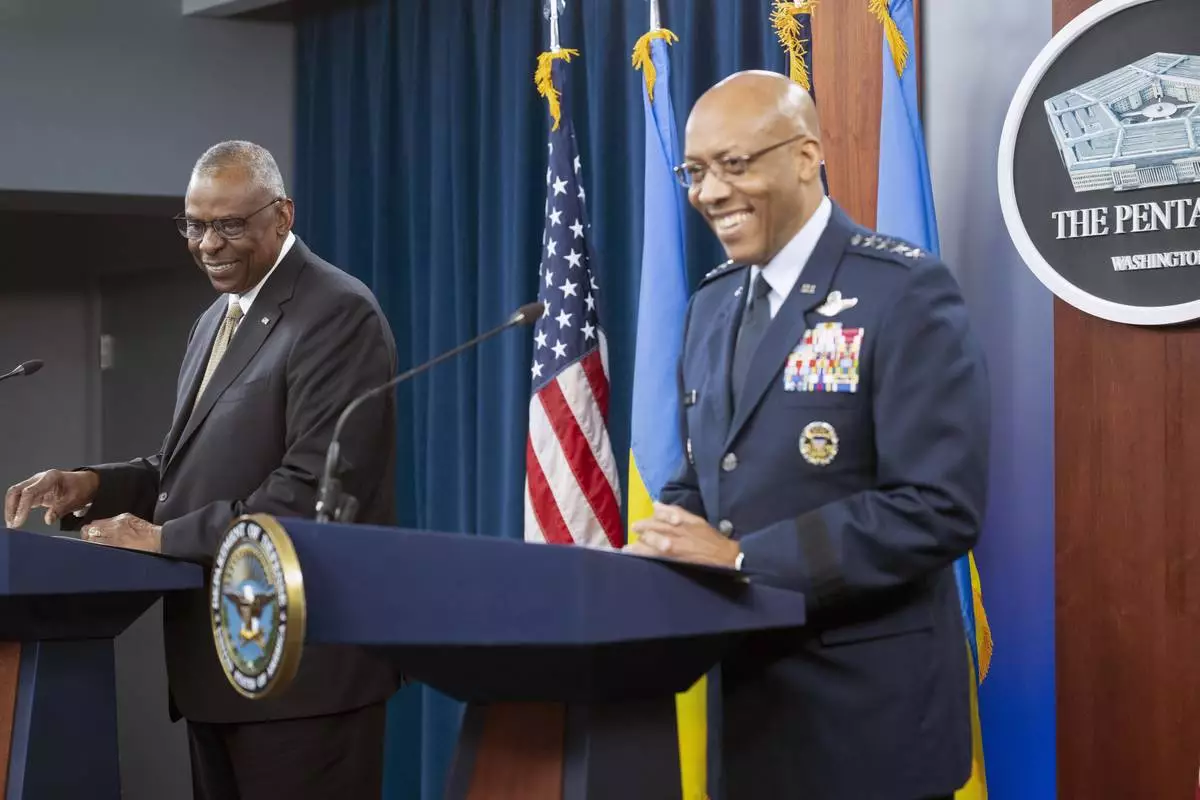
Defense Secretary Lloyd Austin, left, and Chairman of the Joint Chiefs of Staff Gen. CQ Brown Jr., share a laugh at the start of a press briefing on Friday, April 26, 2024 at the Pentagon in Washington. (AP Photo/Kevin Wolf)
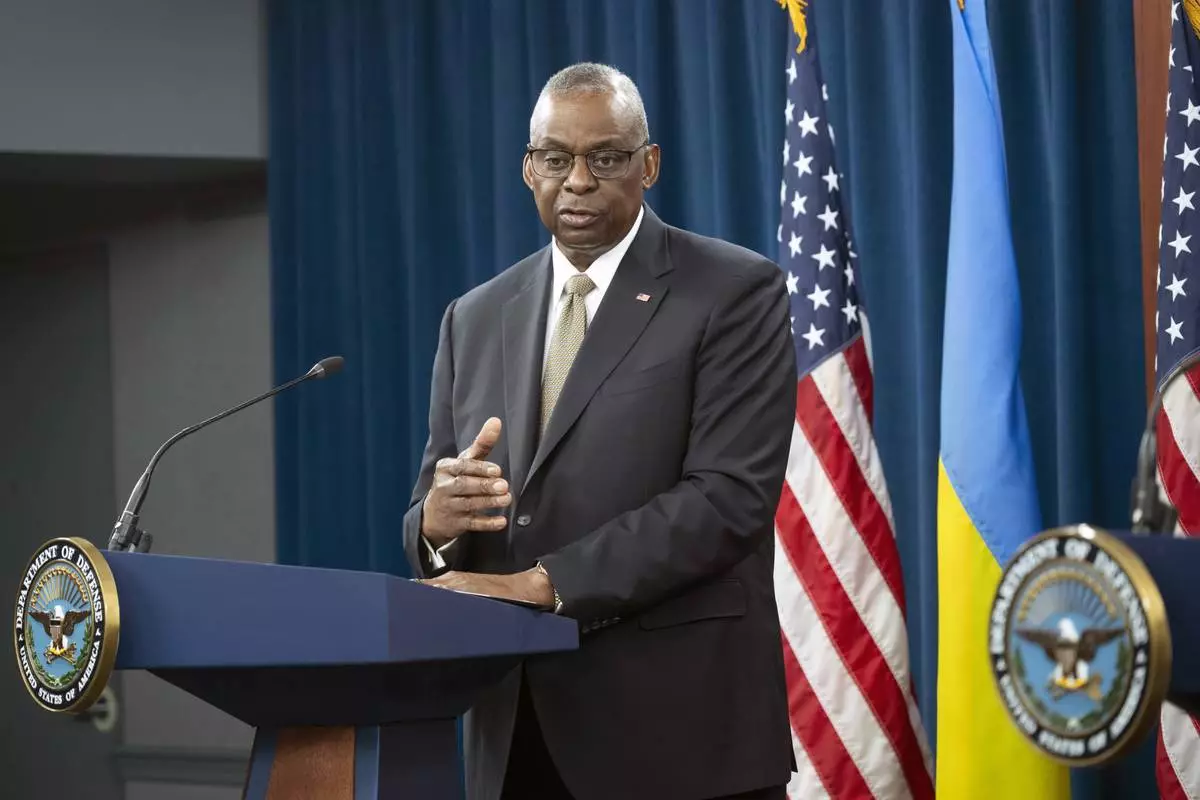
Defense Secretary Lloyd Austin speaks during a press briefing on Friday, April 26, 2024 at the Pentagon in Washington. (AP Photo/Kevin Wolf)
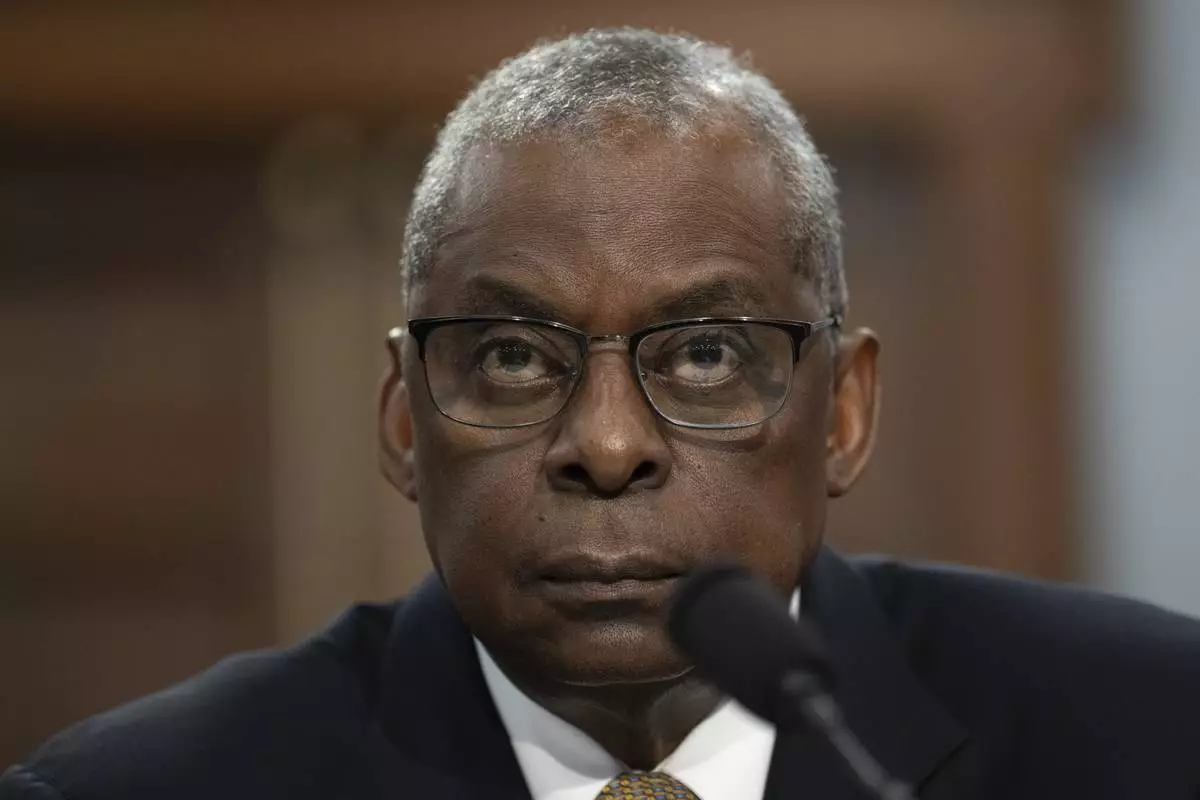
Sec of Defense Lloyd Austin during a House Committee on Appropriations, Subcommittee on Defense budget hearing Fiscal Year 2025 on Capitol Hill, Wednesday, April 17, 2024 in Washington. (AP Photo/John McDonnell)
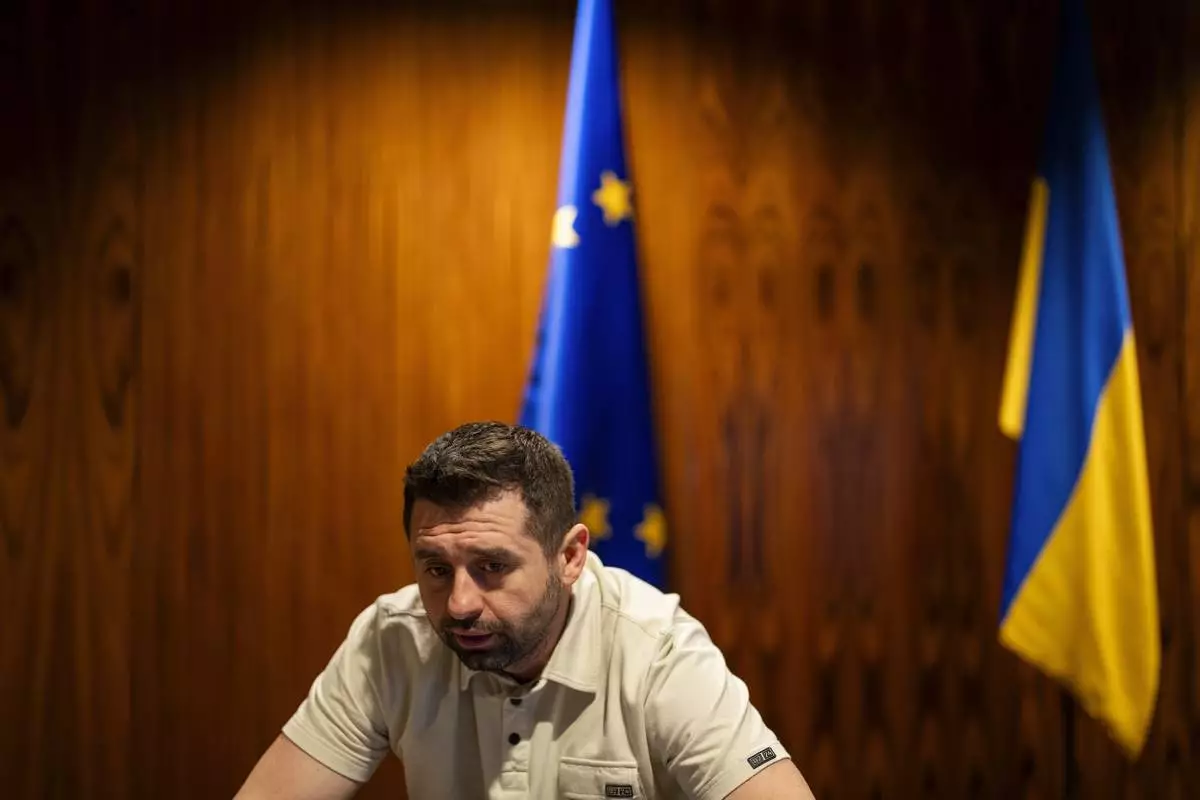
Davyd Arakhamia, a lawmaker with Ukrainian President Volodymyr Zelenskyy's Servant of the People party, talks during an interview with Associated Press in Kyiv, Ukraine, Monday, April 22, 2024. (AP Photo/Francisco Seco)
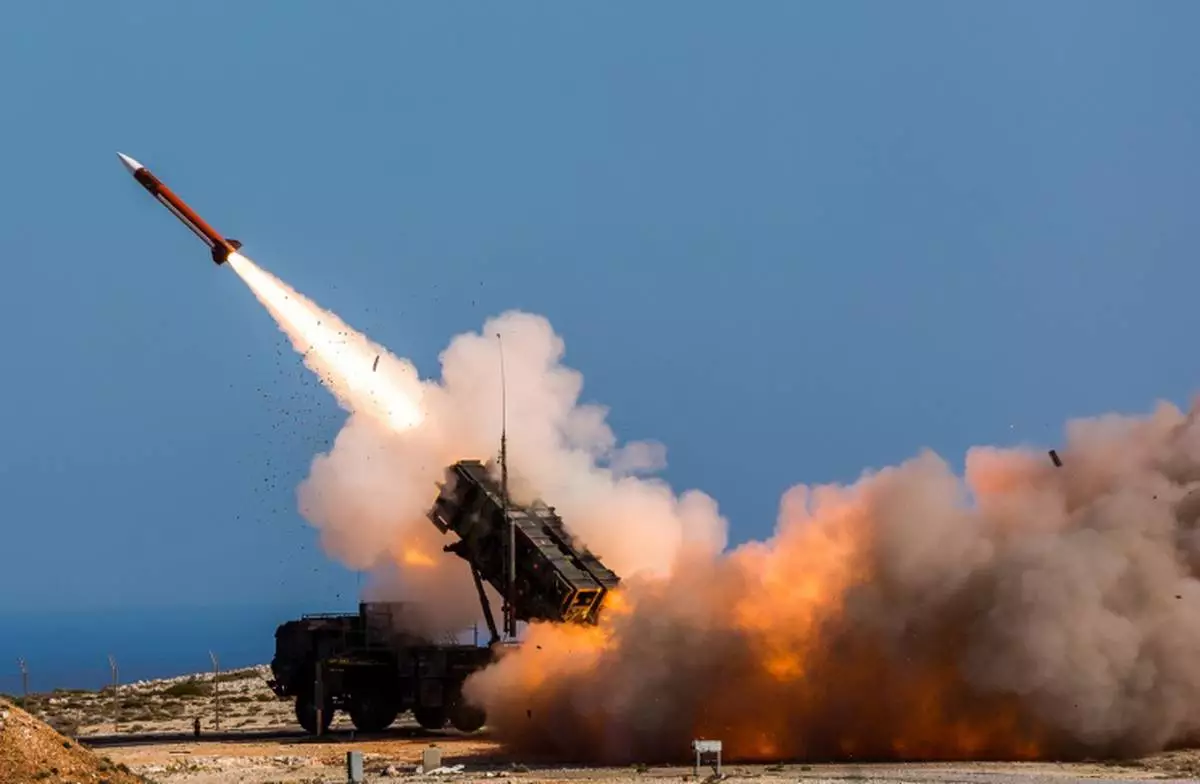
FILE - In this image released by the U.S. Department of Defense, German soldiers assigned to Surface Air and Missile Defense Wing 1, fire the Patriot weapons system at the NATO Missile Firing Installation, in Chania, Greece, on Nov. 8, 2017. U.S. officials say the Pentagon is expected to announce that it will provide about $6 billion in long-term military aid to Ukraine. It will include much sought after munitions for Patriot air defense systems and other weapons. (Sebastian Apel/U.S. Department of Defense, via AP, File)













